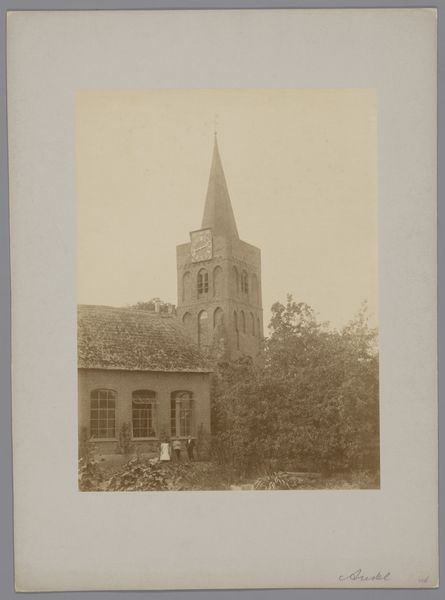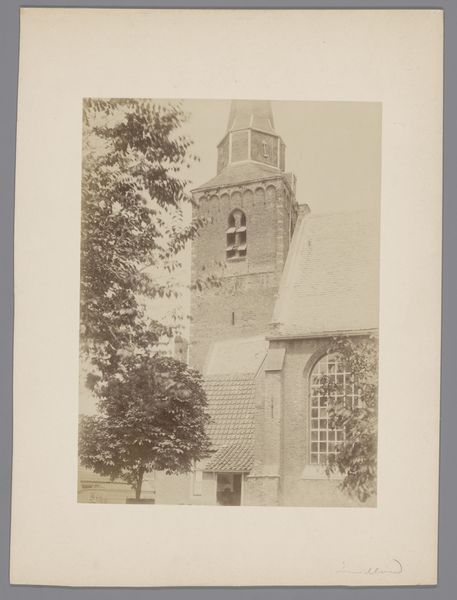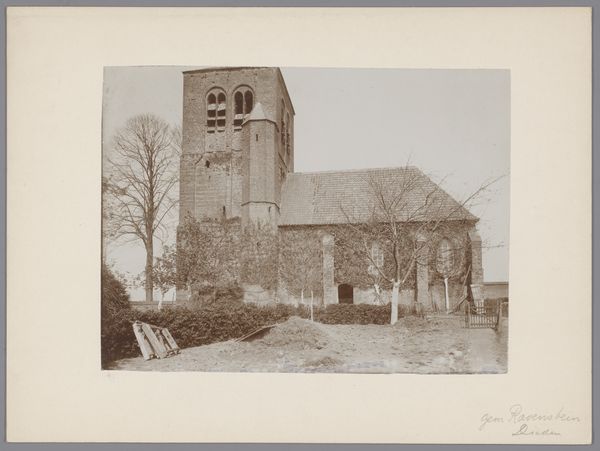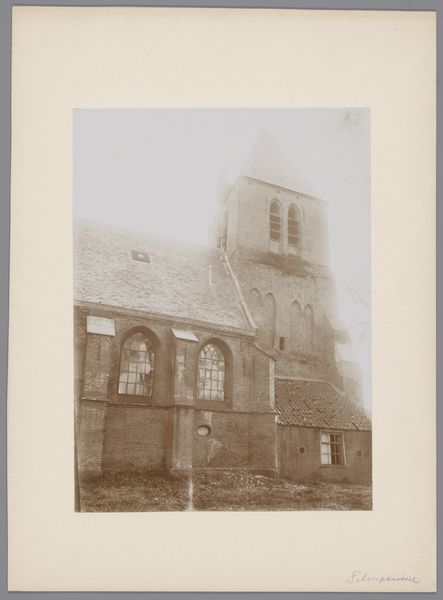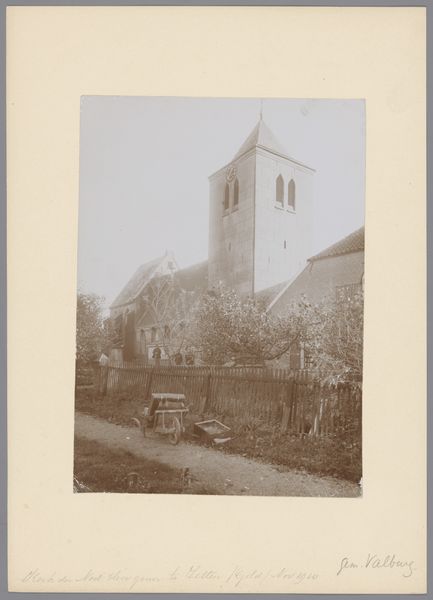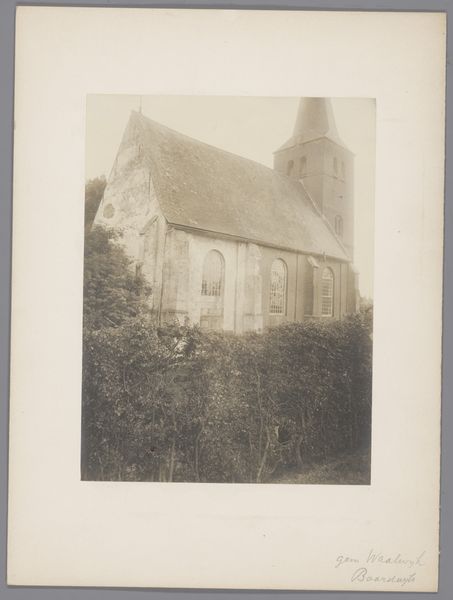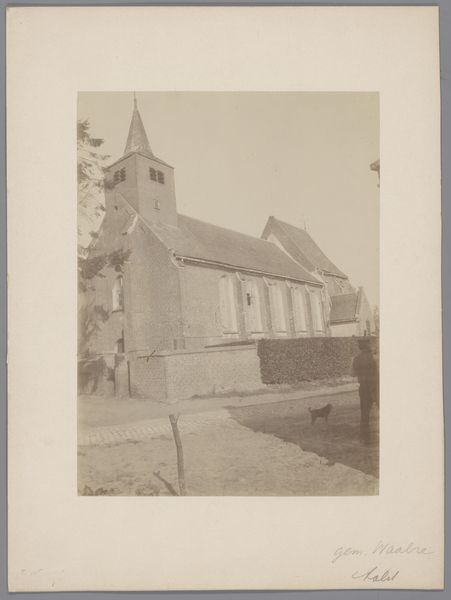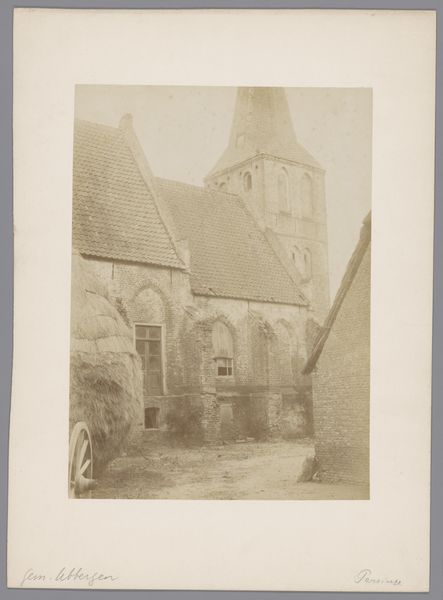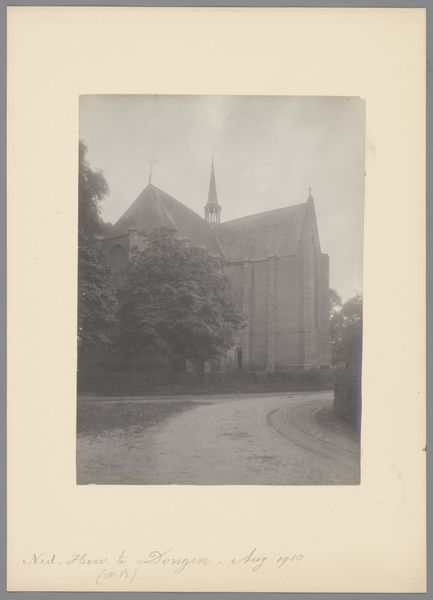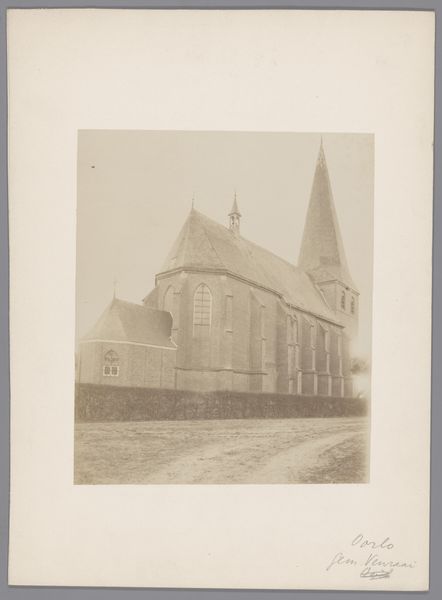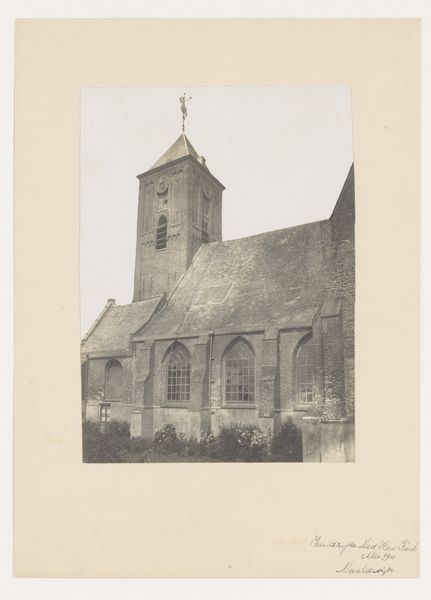
Dimensions: height 231 mm, width 171 mm
Copyright: Rijks Museum: Open Domain
Editor: This photograph, entitled "Gezicht op de Sint-Laurentiuskerk te Dieden," was taken in 1906 by an anonymous photographer for Monumentenzorg. The sepia tones give it a nostalgic feel. It appears to show a solid, sturdy church. What symbolic readings can we draw from a photograph like this? Curator: Well, consider the church itself. Throughout history, churches were more than just religious spaces. They were physical representations of community identity, a place of both refuge and control. Notice how the building is framed—almost stoic—amidst the freshly turned earth, signaling both grounding and the promise of renewal. Editor: That contrast between the man-made church and the natural world outside of it is compelling. It’s got ivy creeping up its walls too… Curator: Indeed! The ivy becomes an important visual signifier, a blending of time and the built environment. Ask yourself, what does it mean when nature starts to reclaim a structured space? Does it signal resilience, decay, or perhaps the persistence of memory? It’s all connected, isn't it? How we shape the land, and how the land eventually reshapes our constructions. Editor: I never thought about the ivy that way, but now it speaks of the intertwining of human intention and the passage of time. It definitely challenges the solid, immutable look of the architecture. Curator: Exactly. A photo like this prompts us to consider layers of cultural memory embedded in the landscape itself. Consider this photograph’s afterlife: taken for monument preservation purposes. Editor: So this image becomes a historical record of something deemed worth saving…or remembering. The symbols keep unfolding! Curator: They do! And seeing the world through this lens helps us decode the narratives held within even the simplest image. Editor: I’ll certainly look at photographs differently from now on. Thanks for this illuminating approach.
Comments
No comments
Be the first to comment and join the conversation on the ultimate creative platform.
